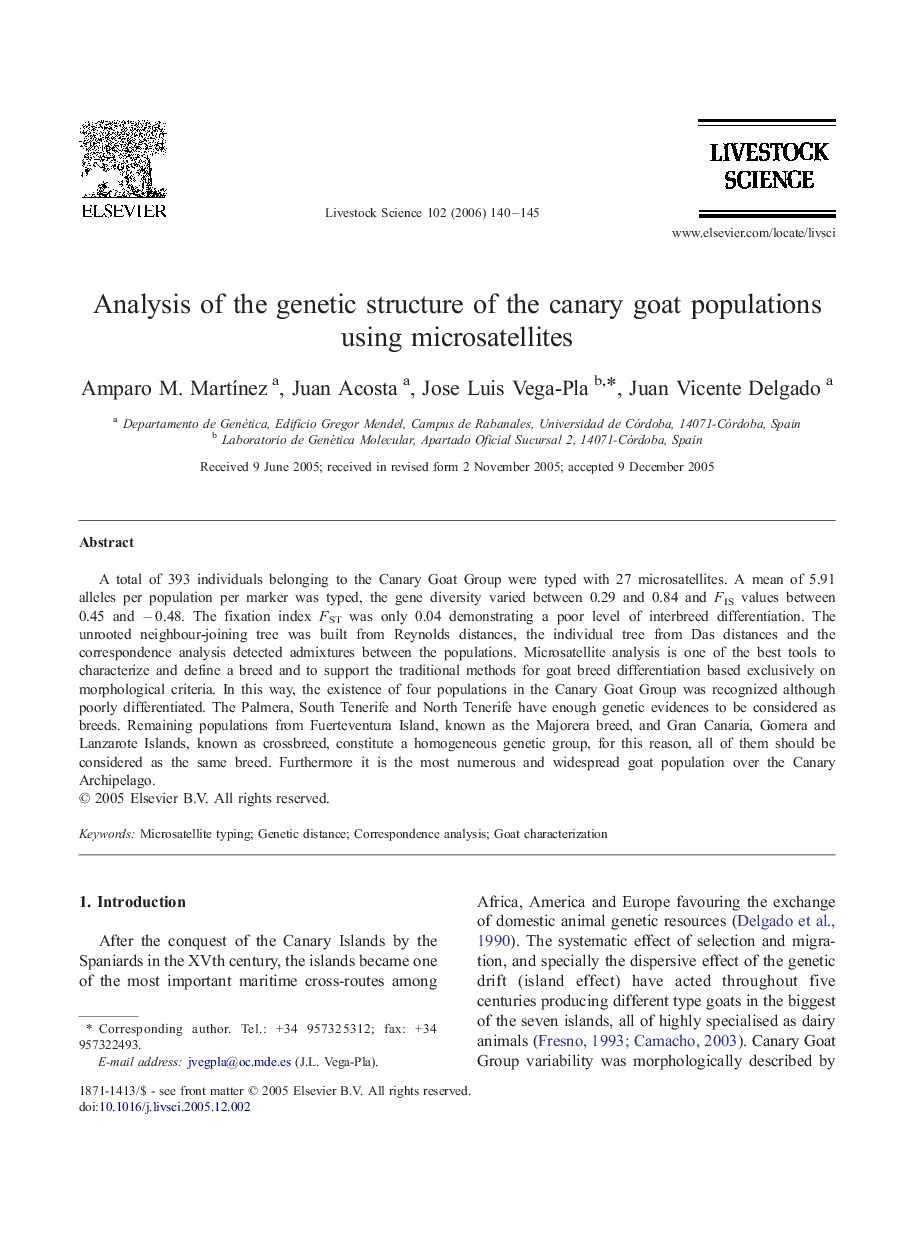| کد مقاله | کد نشریه | سال انتشار | مقاله انگلیسی | نسخه تمام متن |
|---|---|---|---|---|
| 2449082 | 1554032 | 2006 | 6 صفحه PDF | دانلود رایگان |

A total of 393 individuals belonging to the Canary Goat Group were typed with 27 microsatellites. A mean of 5.91 alleles per population per marker was typed, the gene diversity varied between 0.29 and 0.84 and FIS values between 0.45 and − 0.48. The fixation index FST was only 0.04 demonstrating a poor level of interbreed differentiation. The unrooted neighbour-joining tree was built from Reynolds distances, the individual tree from Das distances and the correspondence analysis detected admixtures between the populations. Microsatellite analysis is one of the best tools to characterize and define a breed and to support the traditional methods for goat breed differentiation based exclusively on morphological criteria. In this way, the existence of four populations in the Canary Goat Group was recognized although poorly differentiated. The Palmera, South Tenerife and North Tenerife have enough genetic evidences to be considered as breeds. Remaining populations from Fuerteventura Island, known as the Majorera breed, and Gran Canaria, Gomera and Lanzarote Islands, known as crossbreed, constitute a homogeneous genetic group, for this reason, all of them should be considered as the same breed. Furthermore it is the most numerous and widespread goat population over the Canary Archipelago.
Journal: Livestock Science - Volume 102, Issues 1–2, June 2006, Pages 140–145